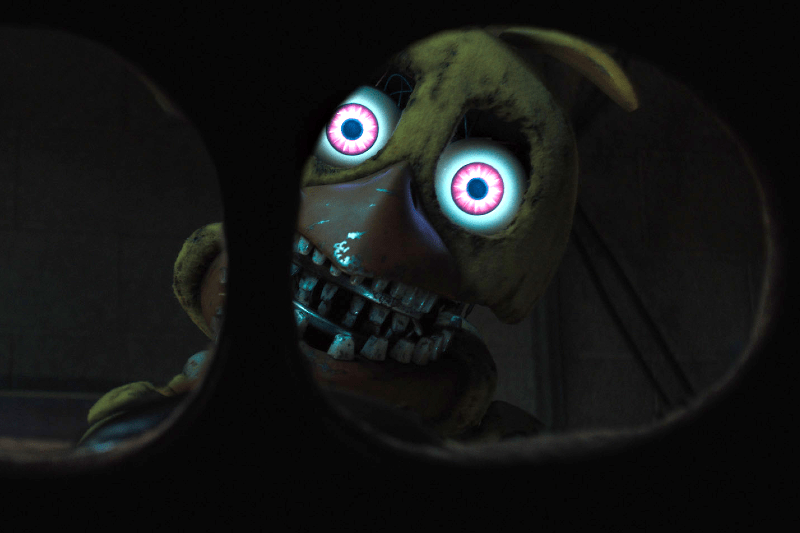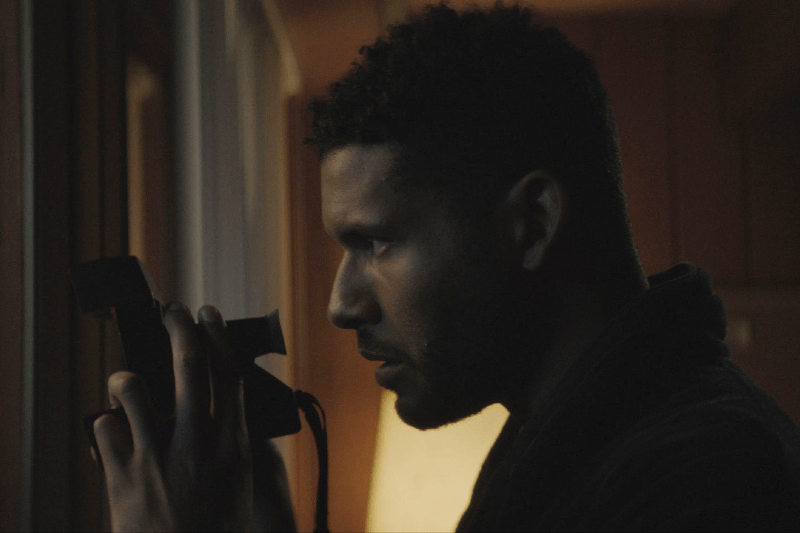I’m an avid video game watcher. From Resident Evil to the 2013 indie darling Gone Home, I’ve sat through some classics. I don’t actually play for the same reasons I don’t go to haunted houses—too scared. Too anxious. Watching, though, I can handle. The distance and detachment make the immersive experience of gaming more palatable. Like watching a movie. Which is one of the reasons I fell under the spell of 2023’s Livescreamers, a screenlife horror video game movie written and directed by Michelle Iannantuono.
A sequel to 2018’s Livescream, a delightfully tense and zippy watch in its own right, Livescreamers, without a doubt, stands on its own. When a group of gamers gather to play a mysterious horror game, they quickly find out dying in the game means dying in real life. What follows is a mix of deep character development, puzzle solving, and of course, multiple gruesome deaths. The film’s plot, while pretty straightforward, focuses heavily on the ethics of and interpersonal relationships of the group, delving into serious topics like grooming, toxic fandom, and hidden disability. Despite the heavy subject matter, the film never forgets the game, balancing heartfelt admissions with frustratingly accurate quicktime events (which is apparently what they call pressing certain buttons at certain times). And while it’s clear the filmmaker’s intent is to focus on the diversity—or lack thereof—in gaming, Iannantuono manages to do so much more.
Livescreamers, like its predecessor, is a morality tale. But in true Twilight Zone fashion, no one wins. When the group realize one of their members has been soliciting pics from young female fans, the betrayal is palpable, and the reaction understandable: they oust him from the group, opting to sacrifice him to the whims of the game. And while seeing real-time consequences for actions that are often minimized or brushed aside is cathartic, it’s also bittersweet. Because the characters are diabolically likable, and the inherent voyeurism of the setup—staring into the faces of the streamers—amps up both immersion and parasocial response. Before you know it, the characters feel like real people, the sometimes-clunky performances only adding to the illusion. Even with the high body count, the film is never cruel, and every death, whether “deserved” or not, has weight. As viewers, we feel the losses along with the team.
Beyond the painstaking character development is the expansion of the game’s lore. Like the original Legend of Zelda, it effortlessly hints at a massive world larger than the experience playing out in front of us. And while I maintain Livescreamers is wildly successful without knowledge of the happenings in Livescream, the multiple direct references to its characters and their fates feel like easter eggs—something the viewer gets to know that the onscreen characters don’t. Recognizing names and references is just as satisfying as figuring out clues. The experience is testament to Iannantuono’s uncanny ability to seamlessly blend the worlds of gaming and film, something that feels surprisingly uncommon.
The ever-rising popularity of platforms like Twitch and Discord, where you can, among other things, watch people play video games, has only furthered the cultural fascination with gaming. Like any well-established format, Twitch streams can be deeply formulaic, sharing similar vibes, beats, and even on-screen personalities. These hyper-curated and very online arenas are perfect vehicles for screenlife stories to unfold; with streamers acting as both creator and subject, their insular worlds are quite literally designed for voyeuristic consumption.
And this voyeurism is perfectly captured by the more robust streamer horror genre. While films like Deadstream and #ChadGetsTheAxe expertly tease out gags and scares by playing on streamer tropes, few—if any—other movies tackle the unique challenges of adding a video game element. With the skill of its makers clearly on display, the Livescream series uses ambition and ingenuity to fill the gamer-sized void in the modern found footage landscape.
Absurdly engaging and deeply committed to the format, the team at the center of Livescreamers feels like a real group, and their fake sponsorship ad feels like something you’d hear during a podcast or Twitch stream. The team feels like a real group, and their fake sponsorship ad feels like something you’d hear before a podcast or on a Twitch stream. Iannantuono and team create something truly immersive, playing on the audience’s familiarity with not just the beats of horror gaming, but the beats of watching it. Which is in no small part because of the quality of the game itself. As predictable as it isn’t, the game at the center of Livescreamers feels like something I would’ve watched my boyfriend play on a lazy summer afternoon in some alternate universe. The authenticity of the setups, quicktime events, twists, and tropes push both the stakes and the immersion, making the film feel more like a multimedia project than anything else.
This delightfully nerdy screenlife horror movie works because of its commitment to the gag. It works because it knows our expectations and plays with that give and take. Despite obvious budget constraints, Iannantuono’s direction is simply exquisite, expertly guiding us around the screen and into top-tier scares. Simply put, Livescreamers delivers at every turn, and that includes its sick end credits that really didn’t need to go so hard.
Livescreamers has the scope to appeal to a vast group of genre fans. It’s an innovative take on screenlife horror, elevating the concepts and pushing creativity. It’s a morality tale that chooses to focus on the power of community and diversity, while managing to never hold back on the scares. And it’s a clear love letter, not just to games like Resident Evil, but to slashers and found footage alike. Michelle Iannantuono’s vision is both fresh and familiar, and whether you’re a gamer, or a watcher like me, the Livescream series is one that deserves your attention.







